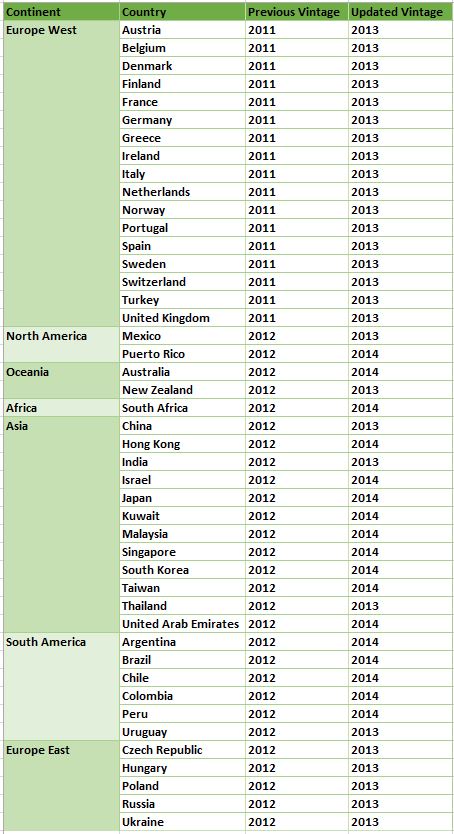Standard Global Demographic data for the following 45 countries is updated and now available on the ArcGIS platform:
The Standard Global Demographic data, which is sourced from Michael Bauer Research, is available across the ArcGIS platform. The datasets differ by country but can include total population, family size, household income, median age, household type, education, consumer spending information on many types of products, and more. The data can be accessed on ArcGIS Online through web maps, data enrichment, reports, and infographics, and through Esri Business Analyst products and apps such as Esri Community Analyst, Esri Maps for Office, and ArcGIS Pro.
In addition to a vintage update, there are some additional changes to the databases in the way of variable additions, variable deletions, changes to variable definitions, and changes to geography names. The July 2015 Standard Global Demographic Data Release Notes (XLS) fully document all of the changes made in this update.
For more information about the changes, this blog is aimed to help users transition to these updated global databases.
We will continue to update the Standard Global Demographic data for other countries throughout 2015.
For easy access to available web maps by country, visit our Esri Demographics Global Coverage story map. Click on a country and follow the links in the pop up to discover the available web maps and data variables available for enrichment.
Here is a small sampling of the 88 web maps that have been updated:
Purchasing Power per Capita in Australia
Average Household Size in Brazil
Purchasing Power per Capita in China
Average Household Size in Germany
Purchasing Power per Capita in India
Purchasing Power per Capita in Mexico
Purchasing Power per Capita in Russia
Average Household Size in South Africa
Variable lists, methodology statements, and sourcing information can all be found on the Esri Demographics documentation pages.


Article Discussion: